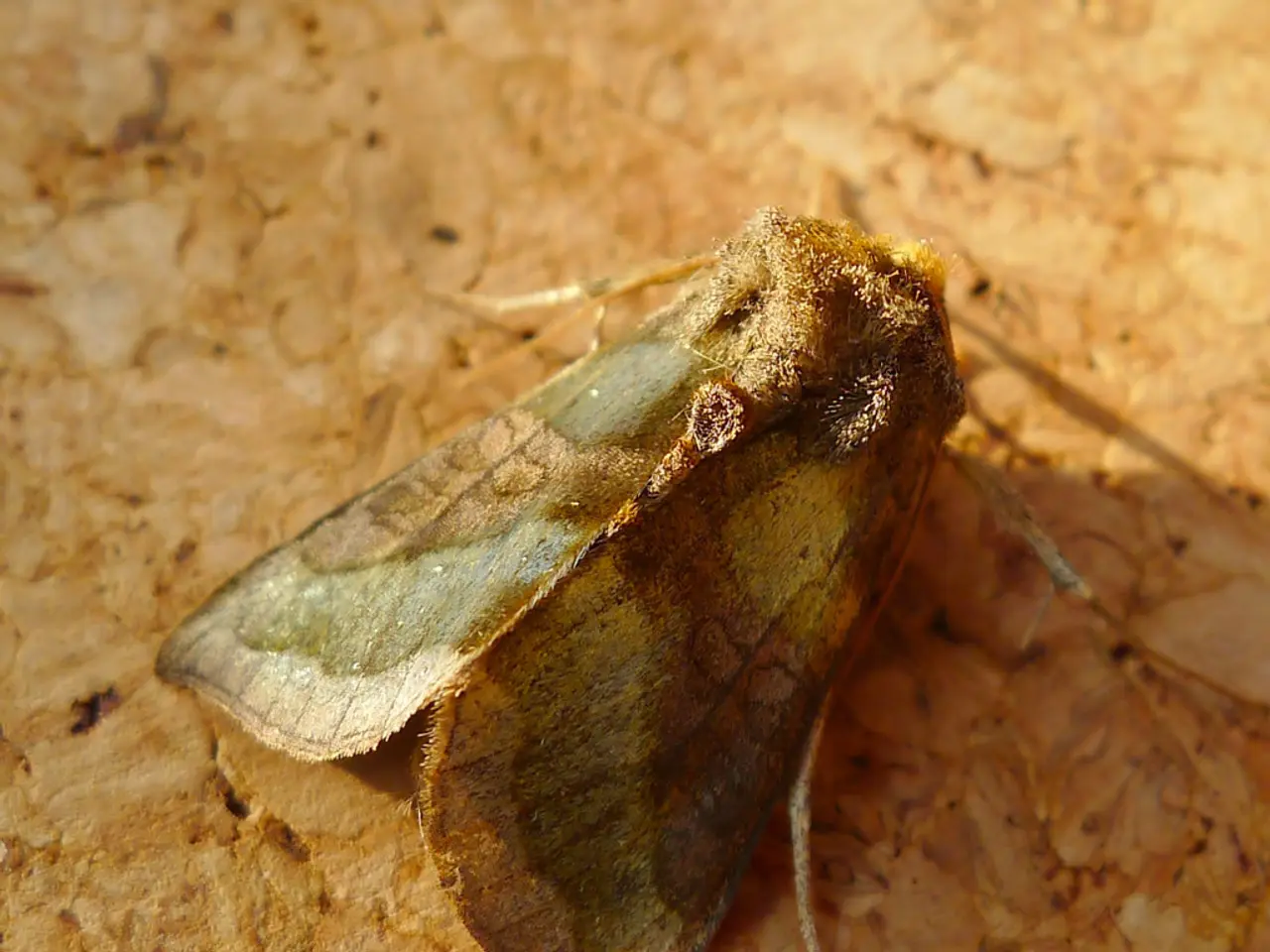Monitoring Moths through Setup of Heath Moth Traps
==============================================================================
In a groundbreaking partnership, the Ahi Pepe MothNet project is harnessing the power of citizen science to explore the diverse world of New Zealand's native moths. This collaborative initiative, which includes schools, Manaaki Whenua - Landcare Research scientists, Orokonui Ecosanctuary, Ngāi Tahu, the University of Otago, and various funding bodies such as Unlocking Curious Minds, Biological Heritage National Science Challenge, and Manaaki Whenua - Landcare Research, aims to shed light on the country's native moths and their roles in the changing natural environment.
At the heart of the Ahi Pepe MothNet project's approach is the Heath moth trap. These traps, equipped with a fluorescent bulb emitting actinic light (whitish-blue light at the 420 nanometre range), are strategically placed in natural habitats to attract moths.
Once the moths are drawn to the light, they enter the trap and are caught either in a funnel leading to a collection container or onto a sticky or netted surface inside the trap. The traps are operated during the night when moths are most active and are checked early in the morning before the sun heats up the trap, causing the moths to become unsettled.
The collected moths are then carefully extracted and temporarily stored in containers suitable for transport to a research lab or a fieldwork sorting station. Here, experts and citizen scientists sort and identify the collected moths through visual examination of wing patterns, morphology, and sometimes genetic analysis to confirm species.
The data collected from these moths contributes to ongoing monitoring of moth biodiversity, population trends, and ecological research. This information helps track environmental changes, invasive species, and conservation status, providing valuable insights into New Zealand's natural environment.
The Ahi Pepe MothNet project also offers hands-on experiences with scientific equipment to students and whānau, fostering a greater understanding and appreciation for the importance of moth conservation.
The Ahi Pepe MothNet project follows internationally recognised moth-monitoring techniques and has established protocols, published local identification guides, and developed the MothNetRecorder for data entry. This project is a testament to the power of collaboration and citizen science in advancing our understanding of New Zealand's unique biodiversity.
For more information about the Ahi Pepe MothNet project, including protocols, methodologies, purposes, and more, visit their website.
- The collaboration between schools, scientists, and funding bodies, such as the University of Otago and Unlocking Curious Minds, is not only focusing on moths but also combining the realms of environmental science and technology to understand more about New Zealand's native moths and their roles in the changing natural environment.
- As the Ahi Pepe MothNet project continues to innovate and explore, it is also leveraging technological advancements in the field of science, as seen with their extensive use of Heath moth traps equipped with actinic light and data entry software like the MothNetRecorder, to further our knowledge and appreciation for the diverse world of New Zealand's native moths.




